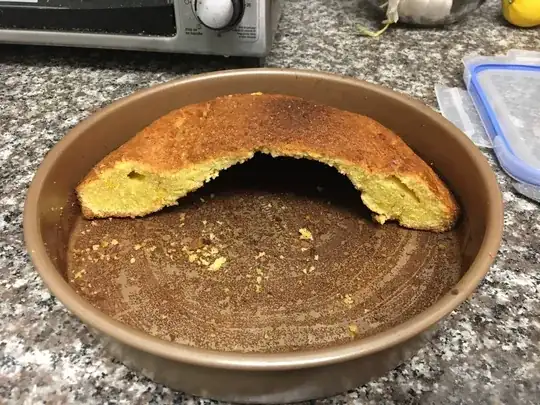It looks to me like the "huge bubble" was not one bubble but lots of little bubbles like you would get from the action of the leavening agent (maybe baking powder). That would be normal, unless the leavening action was excessive (sounds like maybe that was the case if it looked like a huge bubble in the middle of the cake) and produced too much gas for the strength of the solid structure of the cake to support. That would cause the cake to collapse in the middle as it cooled (or maybe even before). Whatever the cause, it looks like your cake was structurally too weak for the amount of leavening.
Not sure where you got your recipe, or whether you followed it exactly ... did you make any minor modifications? Was your recipe designed to be specifically gluten-free, or did you take a standard recipe and just substitute in gluten free flour?
Cake recipes are super touchy, and reside in the fine line between too fluffy and not fluffy enough; too tender and not quite tender enough. So they don't tolerate a lot of tweaking. I can only imagine gluten free cake recipes must be even more sensitive.
Very often when I get "creative" [ha ha] & try to make up my own cake recipes, this sort of thing happens to them. A couple possible causes could be too much of the wet ingredients in the batter or too much leavening.

